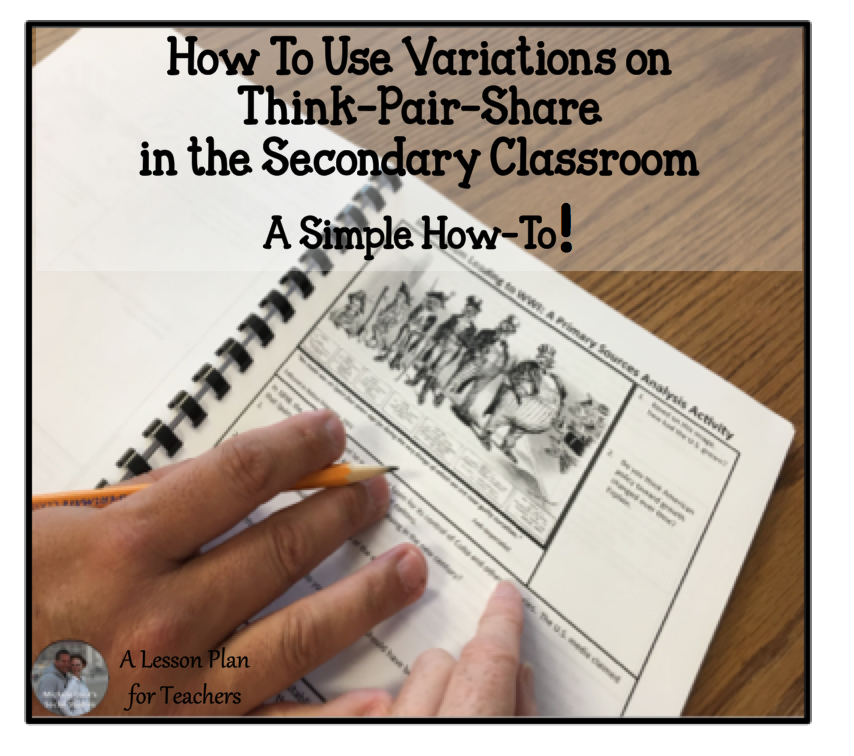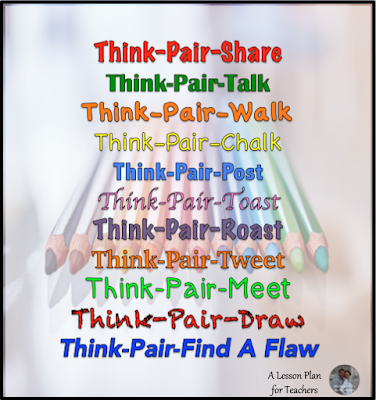Think-Pair-Share is an old strategy that works! However, if it is used often in your classroom, it can become stale, and less effective. So, change it up!

Here are a few how-to suggestions for ramping up your Think-Pair-Share lessons:

Think-Pair-Talk: The simplest variation on the original. Students think about the question/term/or task on their own, pair with a partner to discuss their ideas, and then talk with a small group for further discussion.
Think-Pair-Walk: Instead of wrapping up with a small group, one student from each pair walks up to the front of the class to present their findings. This is perfect for larger research topics or current events.
Think-Pair-Chalk: In this variation, students can silently go up to the board to add their research findings. When discussing controversial topics, this quieter method helps to maintain respect for all perspectives or points of view.
Think-Pair-Post: Using a Facebook template, students can report out their topic research and post them around the room to create a Facebook Feed on the unit content.
Think-Pair-Toast: With this twist on the original, students will create toasts to their assigned topic. This can be a fun wrap-up for concluding a unit and reviewing content topics or vocabulary.
Think-Pair-Roast: Just like the toast option, students will have a little fun while reviewing prior knowledge. Encourage funny stories, tall-tales, or the telling of jokes to share the main ideas.
Think-Pair-Tweet: For vocabulary or people review, have students write simple tweets on the key terms. Learning to summarize in 160 characters or less can be a huge challenge!
Think-Pair-Meet: Similar to the original, after pairs have discussed the topic or term, they draw out table numbers where they go to meet up and share their findings. (Similar to a Jigsaw)
Think-Pair-Draw: One of my favorites, students draw to illustrate the meaning or significance of a topic. Doing character collages can also help students bring significant people back to life for class discussion.
Think-Pair-Find a Flaw: When looking at conflicting points of view or arguing cases, this method is fun and engaging. As students post their findings, others search for opposing points of view to counter each statement. Build up the activity by allowing students to continue the activity over days or weeks through the unit.
How have you modified Think-Pair-Share for you classroom?

Happy Teaching!